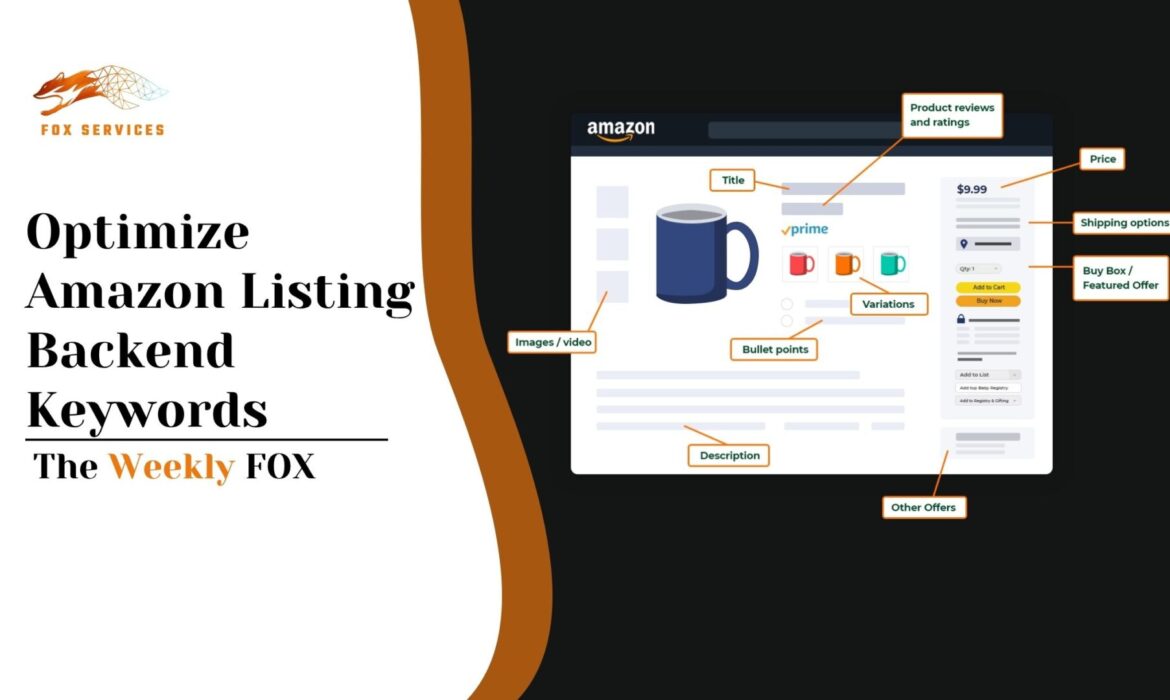How to Optimize Amazon Listing Backend Keywords for Better Rankings
When it comes to ranking higher on Amazon, most sellers focus heavily on visible areas like product titles, bullet points, and descriptions. But did you know there’s a secret area in Seller Central that can dramatically improve your product’s visibility?
It’s called the backend search terms section, and if you know how to optimize Amazon listing backend keywords, you’ll unlock organic traffic you never knew existed.
Let’s dive into how to do it effectively.
What Are Amazon Backend Keywords?
Backend keywords are hidden fields in your Amazon listing—visible only to you as a seller. They are used by Amazon’s A9 search engine to better understand what your product is about.
Customers don’t see these keywords, but they play a crucial role in your product’s organic search performance.
✅ Think of them as your secret SEO weapon—a way to target keywords that don’t fit naturally into your title or bullet points.
Why Optimizing Backend Keywords Matters
Here’s why backend keywords are essential:
- Expand keyword coverage without keyword stuffing
- Help your product appear in long-tail searches
- Improve ad relevance in PPC campaigns
- Target synonyms, regional phrases, and misspellings
Done right, backend keywords can help you dominate Amazon search results with minimal extra effort.
5 Steps to Optimize Amazon Listing Backend Keywords
1. Use All Available Characters (But Wisely)
Amazon typically allows 250 bytes (characters) in the backend search term field. Use them all efficiently—no fluff.
Avoid:
- Repeating keywords
- Brand names (including competitors)
- Commas, punctuation, or capital letters
- Irrelevant keywords
✅ Example:eco friendly travel mug stainless steel leakproof thermal
Not this:Eco-Friendly, Travel Mug, Stainless Steel, Leak-proof
2. Target Long-Tail Keywords
Use backend space to capture high-intent long-tail keywords that don’t fit naturally in the title or bullets.
Example:pink leakproof bento lunch box for office women
These highly specific phrases often have less competition and higher conversion rates.
👉 Learn more about this in our post on long-tail keywords for Amazon listings.
3. Include Synonyms and Common Misspellings
Think like your customer. Someone may search “refillable pen” while someone else types “ink pen.” Cover both by using backend fields for variations, regional terms (e.g., “color” vs. “colour”), and commonly misspelled words.
💡 Bonus tip: Avoid overusing misspellings—Amazon’s algorithm is smarter now but strategic use can still help.
4. Don’t Duplicate Keywords From Frontend
Many sellers unknowingly repeat keywords already used in the title or bullet points. Don’t waste space—Amazon already indexes visible content.
Use backend keywords to expand your reach instead of doubling up.
5. Regularly Audit and Update
Trends, customer behavior, and competitor strategies shift. Revisit your backend keywords every 30–60 days using tools like:
Helium 10 (Cerebro + Keyword Tracker)
SellerApp
DataDive
🔗 External Resource: See how Helium 10’s keyword tools can support backend optimization
Common Mistakes to Avoid
❌ Using irrelevant or spammy keywords
❌ Overstuffing with commas and symbols
❌ Adding competitor brand names (can lead to listing suppression)
❌ Exceeding the 250-character limit
Keep your backend keywords clean, relevant, and customer-focused.
Bonus Tip: Align Backend With PPC
Many sellers miss this: use backend keywords to support exact match PPC campaigns. When a term performs well in ads but doesn’t fit into your title, backend fields are the perfect place.
Also, when optimizing listings after running auto campaigns, feed converting keywords directly into backend fields.
👉 Learn how to enhance your PPC structure with our Amazon low competition PPC keyword strategy.
our backend keywords are more than just filler—they’re a strategic advantage.
When you optimize Amazon listing backend keywords, you tap into a layer of discoverability most sellers ignore. The result? More impressions, better rankings, and higher conversions—all without touching your frontend listing copy.
Start thinking of backend keywords as your hidden growth engine, not just a box to fill in Seller Central.
🚀 Want Expert Help Optimizing Your Amazon Listing?
Let’s take the guesswork out of your backend SEO strategy.
👉 Book Your FREE Amazon Listing Audit Call
In just 20 minutes, I’ll help you:
- Analyze your current backend keyword strategy
- Identify high-opportunity long-tail keywords
- Build a custom optimization plan
🎯 Click here to schedule your strategy session now—limited slots available every week!







